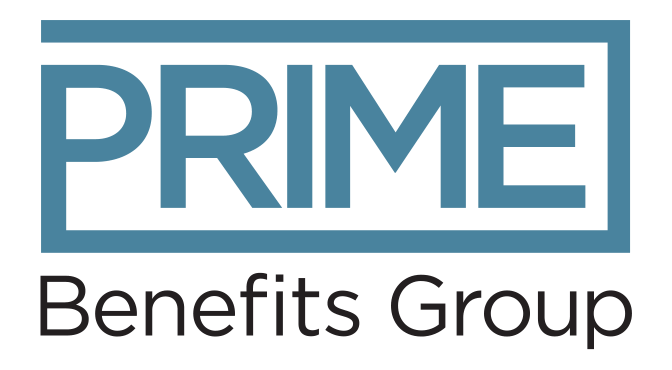- Have a question?
- 613-89-Prime (77463)
- 1-866-950-3667
- info@primebenefitsgroup.com
Hot Design: Pros and Cons for the Hybrid Office


Three employees engaging in a conversation
‘Hot desking’ appears to be the new way to return to the office. For freelancers or part-time staff, this model may not be particularly new. It’s a flexible workspace arrangement that involves employees sharing desks or workstations as opposed to having assigned seating, and it’s gaining popularity among hybrid workforces for several reasons. The concept offers many benefits, but without the right strategy or approach, an employer’s vision of a hot desk hybrid haven could quickly turn into a hot mess.
Why is Hot Desking Trendy?
Hot desking is the practice of not having assigned desks and allowing employees to choose their workspace each day. The concept is based on ‘hot racking’, which refers to a practice in the US Navy that involves marines sharing bunks according to the organization of their shifts. It’s called ‘hot’ racking because the beds stay warm when the previous occupants have just left them. Just as ‘hot racking’ addresses limited space on ships, ‘hot desking’ serves to optimize space in workplaces by sharing desks according to availability.
With ‘hot desking’, employees can choose any available desk or workstation within a shared office environment. Unlike traditional offices, where employees have assigned desks, hot desking promotes flexibility and encourages collaboration by creating a dynamic and adaptable workspace. According to a report by Colliers Canada, nearly two-thirds (61 per cent) of Canadian employers are using a hybrid work model. The report also says companies continue to experiment, and their space needs continue to evolve.
Most workplaces already had vacancy rates of 20 to 50 per cent prior to the COVID-19 pandemic. Now, with the rise of remote work and flexible work arrangements, many employers are not tied to a specific office location. Hot desking provides employees with the freedom to work from any office site, with the goal of enhancing productivity and work life balance.
The Pros of Hot Desking
There are several benefits associated with ‘hot desking’ to consider, including:
- Flexibility: Flexible work is a major consideration for post-pandemic employees when evaluating job opportunities. In fact, 37 per cent of employees said if companies still work in traditional working methods, they would leave the traditional office. Hot desking allows employees to choose a workspace that suits their needs on a given day. It offers the flexibility to work in different areas of the office, depending on the task at hand, promoting creativity and adaptability.
- Cost Savings: Hot desking can reduce the total office space required, leading to potential real estate cost savings for the employer. Fewer desks and facilities are needed because employees are sharing workstations. With fewer permanent workstations, companies can allocate resources to other areas, such as technology upgrades or employee development programs.
- Enhanced Collaboration: Hot desking can create opportunities for more unplanned interactions and collaboration among employees, which encourages the exchange of ideas. This can contributed to a more innovative and dynamic work environment.
The Cons of Hot Desking
Hot desking isn’t a ‘one-size fits all’ approach to the workplace. As companies continue to experiment with different work models, and preferences continue to evolve among employees, consider the following potential risks:
- Too Many Distractions: While hot desking could save money on office space, it could be costing hours a day in productivity. Sharing workspaces can lead to noise, interruptions, and constant movement, potentially impacting concentration and productivity. A Canada-wide survey commissioned by co-working firm iQ Offices found that 57 per cent of employees in an open office say they have to fight distractions at work every day.
- Lack of Personalization: Not having an assigned desk means employees may not be able to personalize their workspace or store personal belongings, which can impact comfort and a sense of ownership
- Cleanliness Concerns: Frequent use of shared workstations raises concerns about maintaining cleanliness and hygiene standards.
Don’t Get ‘Burned’…
When considering whether ‘hot desking’ is the right approach for your workplace, it all comes down to productivity and culture. To ensure you’re making the right decision, consider involving employees in your decision-making process. Survey employees and invite their feedback to understand their preferences and concerns, to gain support, and to address potential issues. Provide a variety of workspaces, such as quiet zones, and areas suitable for different tasks or collaboration. This helps employees find a suitable workspace based on their needs, eliminating distractions, and promoting productivity. Provide reliable technology and adequate IT support to ensure smooth transitions between workstations, especially for hybrid workers switching between the office and remote work. Also, establish regular cleaning schedules, provide sanitization stations, and encourage employees to follow best hygiene practices to maintain a safe and healthy working environment. By considering the pros and cons and involving employees in the process, you can make an informed decision about implementing hot desking for your hybrid workforce.
Suggested Reading
Forbes: New Desk, Who Dis? Hot Desking and the Hybrid Workplace
The great divide over ‘hot-desking’ pits cost savings for companies against alienation for employees
Additional Resources
Open-concept offices, hot desks damage worker productivity: survey
Global Workplace Survey Comparison 2023: Gensler Research Institute